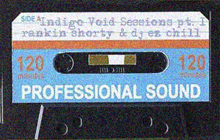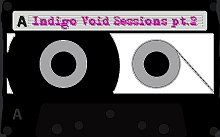 PUNISHMENT is a very effective technique for modifying a musician’s behavior. If there is a clear and predictable relationship between a certain behavior, like for example fiddling around with FM synthesis, and the outcome (confusion, anger, frustration, despair) behavior will be modified in such a way that a musician avoids more PUNISHMENT. In the case of FM that means we avoid creating our own sounds.
PUNISHMENT is a very effective technique for modifying a musician’s behavior. If there is a clear and predictable relationship between a certain behavior, like for example fiddling around with FM synthesis, and the outcome (confusion, anger, frustration, despair) behavior will be modified in such a way that a musician avoids more PUNISHMENT. In the case of FM that means we avoid creating our own sounds.So what? What's so great about creating FM sounds anyway?
Well, believe it or not, from a sound designer's point of view FM synthesis is actually an EASY way to create ORGANIC, COMPLEX (as in musically interesting) timbres. Very useful if you want to create your own sounds and work fast. FM is almost as useful for sound mangling as feedback (a trick so crucial almost every sound effect has it).
So why do most musicians think of FM as a COMPLEX way to create CHEESY, STERILE sounds? Surely this is not because of the properties of FM as such. It’s mostly because FM and user friendly interface design haven’t met yet. There's a historical reason for that.
 Thirty years ago Yamaha introduced the DX-7 (the mother of FM synthesis) and it was an instant hit. In the 80's the cheapest route to ‘realistic’ pianos, organs, kotos and bells was buying a DX7. Although Yamaha made it possible - in theory - for musicians to edit the presets sounds, or even create new ones, this option was extremely unpopular because those who tried usually got PUNISHED really bad. For the average DX-7 owner the idea was not to get too smart and just use the damn presets or buy a few banks of extra sounds.
Thirty years ago Yamaha introduced the DX-7 (the mother of FM synthesis) and it was an instant hit. In the 80's the cheapest route to ‘realistic’ pianos, organs, kotos and bells was buying a DX7. Although Yamaha made it possible - in theory - for musicians to edit the presets sounds, or even create new ones, this option was extremely unpopular because those who tried usually got PUNISHED really bad. For the average DX-7 owner the idea was not to get too smart and just use the damn presets or buy a few banks of extra sounds. So WHY did Yamaha include extensive, yet impenetrable sound editing features in the DX-7? The reason is purely economic. On the one hand Yamaha needed an extremely sophisticated form of FM (way beyond the basics) to create those 'realistic' sounds that could blow away the competition. But at the same time they also wanted the DX7 to be marketed as a revolutionary new kind of synthesizer; not just a keyboard. An instrument that would be able to compete with expensive analog polyphonic synths.
 So Yamaha said OK, we’re going to have a new, revolutionary, classy sounding synth that has mature FM technology on board, BUT... to cut costs we’ll settle for shitty editing. This strategy worked, but of course it also gave FM synthesis a bad name. The learning curve for editing the DX-7 wasn’t steep, it was vertical. There was no gradual introduction, no shortcuts, no tips & tricks only PUNISHMENT.
So Yamaha said OK, we’re going to have a new, revolutionary, classy sounding synth that has mature FM technology on board, BUT... to cut costs we’ll settle for shitty editing. This strategy worked, but of course it also gave FM synthesis a bad name. The learning curve for editing the DX-7 wasn’t steep, it was vertical. There was no gradual introduction, no shortcuts, no tips & tricks only PUNISHMENT. The reason Yamaha could get away with shitty editing is that most musicians didn't like editing sounds anyway. Sophisticated sound design is a bit like building new instruments. Most synth owners simply wanted to play them (think weddings, hotel bars etc.).
The important thing to remember from this little historical excursion is that it’s not FM synthesis that’s the problem. It's the design of the edit-functions in the case of the DX7. Unfortunately, the complex DX7-style of editing FM sounds wasn't improved in later Yamaha models like the DX-21 and the DX-100. These were simplified DX-7s, but only in the sense that they had less options for tweaking sounds.
 In the 80's, knowing how to edit a DX-7 was a bit like understanding quantum physics. Only geeky soundguys like Trevor Horn could do it.
In the 80's, knowing how to edit a DX-7 was a bit like understanding quantum physics. Only geeky soundguys like Trevor Horn could do it.But of course times have changed. Nowadays we have samplers for those 'realistic' pianos and koto's and bell sounds. So right now the only reason that’s left to explore FM synthesis is really it's own sonic quality. Again: FM synthesis is a relatively EASY way to create ORGANIC, COMPLEX (as in musically interesting) timbres.
OK so let’s get started. The DX7 is in the museum, this is the 21st century. We're all into sound design nowadays, we have stuff like Ableton Operator, the FM8 by Native Instruments etc. No more need for PUNISHMENT. Surely those user interfaces have improved by now?
Oooooops..
It seems like software developers have been brainwashed into believing that FM has to be difficult. There's hardly any effort to design simple FM synths. The current philosophy seems to be “we’re incredibly sorry about you getting PUNISHED, but if you register here you can join our wonderful official user forum, where everybody’s waiting for you, and ready to help you, dear customer”.
 But we don’t want to waste our time on user forums requesting new features that will never be implemented. We just want the developers to design stuff that works and is easy to use.
But we don’t want to waste our time on user forums requesting new features that will never be implemented. We just want the developers to design stuff that works and is easy to use. And what’s even more bizarre: most online FM tutorials are written from that same bullshit perspective “it's FM so let’s make it as impenetrable and difficult as possible.” Even a magazine like Sound On Sound hits you with Einstein-level mathematics like Bessel functions in their 'Synth Secrets' series on sound synthesis.
OK, so now what...
Dubbhism comes to the rescue ;-) The goal of this series of tutorialistic rants about FM synthesis is to show you how to make the most of FM, even if you're using a synth that has unmusical words like algorithm, operator, modulator, carrier etc. written all over it.
This may sound fairly optimistic, since YOU'VE BEEN BRAINWASHED to believe that FM synthesis is one of the TOUGHEST and most COMPLEX 'challenges' for sound designers. But we're going to break it down, and once you get the basics you'll be able to find your way through any jungle of drop-down menu's, buttons and sliders.
 Unlike the average FM tutorial this one will have absolutely NO MATHEMATICS, but you WILL be using your brain every now and then, and be required to actually THINK with it. Look at it this way: if you can operate a flanger stompbox you're also qualified to work with FM. But after the first steps you shouldn’t give up if we start making things a little crazier and connect 2 or even 3 flangers in various ways, just for fun, to see what happens. If you think you can handle that you'll be OK, and you will not be PUNISHED.
Unlike the average FM tutorial this one will have absolutely NO MATHEMATICS, but you WILL be using your brain every now and then, and be required to actually THINK with it. Look at it this way: if you can operate a flanger stompbox you're also qualified to work with FM. But after the first steps you shouldn’t give up if we start making things a little crazier and connect 2 or even 3 flangers in various ways, just for fun, to see what happens. If you think you can handle that you'll be OK, and you will not be PUNISHED.
















